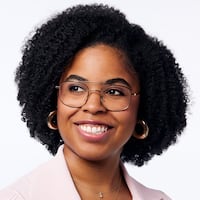Britain's general election has ended with no party winning an outright majority, bringing the second so-called hung Parliament in the last three elections.
»RELATED: A look at what a hung Parliament means for Britain
So who will form the government now?
Prime Minister Theresa May has gone to Queen Elizabeth II to get permission to form a government with the help of the smaller Democratic Unionist Party, but not everyone is familiar with the organization. Here are few fast facts:
What is the DUP?
The DUP, a unionist political party, is the largest party in North Ireland. As the offspring of the Protestant Unionist Party, the group was formed by Ian Paisley in 1971. Since its inception, it has grown to become the largest party in the Northern Ireland Assembly and the fifth largest one in the House of Commons of the United Kingdom.
Who are the DUP’s key leaders?
Arlene Foster is the current leader. The chairman is Lord Morrow, and the deputy leader is Nigel Dodds.
What does it stand for?
The group is against same-sex marriage and opposes lifting the current ban on abortions. It has also spoken against Brexit and efforts to combat climate change. DUP lawmaker Sammy Wilson has called the Paris Agreement on climate change "a delusion." He also said President Donald Trump's withdrawal from the agreement was "very wise."
»RELATED: What is the Paris climate agreement? 9 things you should know
How many seats does it hold?
With all but one seat counted, the DUP won 10 seats in the House of Commons and the Conservatives 318 — enough to form a working majority.
How will the DUP potentially form the new government?
The organization will provide votes. While the DUP and House of Common are closely aligned on some issues, they differ on matters such as pensions and the details of Britain's exit from the European Union. May will likely have to make compromises to win the DUP's backing.
Information from The Associated Press was used in this report.
About the Author
The Latest
Featured



